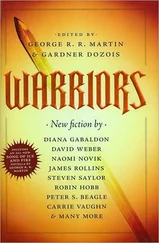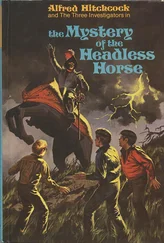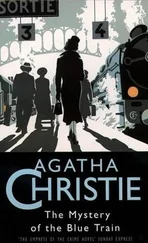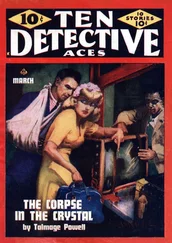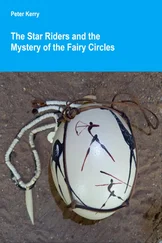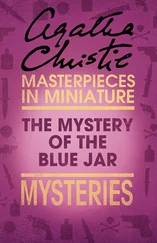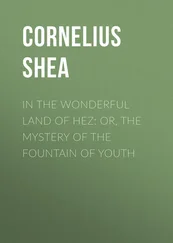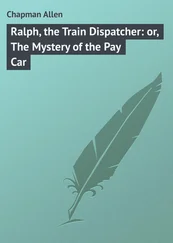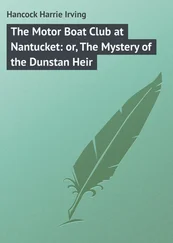‘There’s nothing to be frightened of,’ said Anna. ‘People are often frightened when they first see the skull,’ she added.
‘It’s not surprising, really,’ said Jimmy. ‘Just look at how the skull has become a symbol to be feared. It’s either in horror movies, Friday the Thirteenth and all that, or it’s a warning on a bottle of poison.’
It was true, the skull did always seem to be a fearful image in our culture. Its primary purpose always appeared to be to terrify people or warn them of danger.
Anna continued, ‘People usually come to see the skull in twos and threes and often one of them is nervous about seeing him. But the next thing you know they are sitting right near to the skull. They say, “It’s not what I thought it would be. It’s beautiful.” And the joy comes into their faces and they are happy.’
This struck me as rather curious. Here was an image of death that Anna claimed actually made people feel happy. At first I didn’t understand it. But I have to admit that, after a while, I started to feel sort of warm, almost cosy, in the skull’s presence. I began to think about it. Perhaps meeting the skull was a way of overcoming our fear of death, of meeting the very image of our future selves. We normally try to push all thoughts of death away. And yet here I was staring the very image of death in the face.
As I was sitting there looking at the beautiful, pristine, clear nature of the crystal, it occurred to me that perhaps the very reason why the skull had been carved out of a transparent material was so that it did not represent any one person. It could be anyone’s skull. Perhaps that was it – the skull was meant to represent each and every one of us. After all, each of us has a skull within us, buried under our skin, and one day that will be all that will be left of us. So, of all the symbols available to humanity, what could be more universal than a skull? For it is a symbol that speaks to every living person.
As I examined the skull, its smooth contours and hollow eye sockets, I thought about how I would one day die and that I too would be little more than an empty skull. Not only me, but everyone I knew and cared about would go the same sad way. I wondered if perhaps that was the purpose of the crystal skull, to remind each of us of our own mortality and of the very short time that each of us has as a living being on this Earth.
But there seemed to be more to it than that. In any case, who needs a reminder that they are going to die? Surely that couldn’t be the only reason for making the skull. If it was, then it was a bizarre and macabre one.
I held up the separate jaw-bone. It was beautifully crafted, with each tooth picked out in fine detail. Perhaps the skull only seemed macabre to me because of the attitude I had towards death, because it was something that I didn’t want to acknowledge. As I slotted the separate jaw-bone carefully back on to the skull, it suddenly struck me that that stark, cold image of death actually concealed a powerful message: it reminds us that we are alive! I remembered something I had heard somewhere – that it is often only when people are closest to death, when they are in a sense staring death right in the face, that they feel fully alive and able to truly appreciate life. Could it be that the crystal skull was also here to help us appreciate life?
I moved the skull around, watching the way in which it caught the light. Had it been designed so that as we look upon its cool chiselled contours we are reminded of the feel of the soft skin on our own faces and the warm pulse than runs through our veins?
But there was still something further, something about the skull’s transparent nature. For this was an image of death that you could almost see through, right to the other side. It was as if this death’s head was telling us that death is actually something that we can transcend, something we can go through and come out the other side.
I put the crystal skull back on its velvet cushion on the coffee table, next to a framed black-and-white photograph of Frederick Mitchell-Hedges. Anna was just beginning to tell Ceri that her own good health and longevity were all thanks to the crystal skull. I had to admit, she was a very spritely 88-year-old with unusual amounts of energy. ‘The skull gives you health, happiness and joy of life,’ she explained. ‘He is always in my room, even when I am sleeping. I know the skull protects me. All through my life he has protected me.’
Ceri drew my attention to the tiny bubbles she had noticed deep inside the crystal skull. They were laid out in softly curving planes, glittering within the body of the crystal like tiny stars within a distant solar system on a very clear starry night. It was amazing to think that these tiny bubbles must have been trapped in the crystal as it was being formed many millions of years ago.
As I gazed on, I couldn’t help getting the feeling that there was still far more to the crystal skull than I had so far been able to fathom. It was more than just a reminder of our own mortality. There was something else, something beyond that. But it seemed that the real significance of the crystal skull was as yet intangible to me.
Anna was discussing the visitors who came to see the skull. ‘The skull brings people together in many, many ways. It’s always a happiness for me to show it to people, to see the joy it brings them. So many people come, sometimes as many as 14 people, sometimes 18. I have a lot of Indian people. American Indians and Canadian Indians stay with the skull for hours and I can’t tell them, “Well, it’s time for you to go.” The skull is loved very much by everyone who comes to see it. I’ve even had the actress Shirley Maclaine come to work with the skull.
‘I welcome people because it’s a way of giving a little happiness and really, it’s the skull that does that. I call it “the Skull of Love,” just as the Mayans would think of it.’
‘The sun has come out,’ said Jimmy. We looked out through the windows to see pale wintry sunshine on the road outside. Jimmy offered to show us how the skull responded to sunlight so we followed him out into the garden.
I was fascinated by the way that the skull reacted to light. It appeared completely different depending on how it was lit, almost as if its face were changing, and as it was changing so too were the patterns and refractions of the light inside. I held it up to the sunlight. Although the sun was not particularly bright, the effects on the skull were none the less beautiful. The prismatic qualities of the crystal created a display of reflections that showed quite clearly all the different colours of the rainbow. It was stunningly beautiful.
I was interested to know how the skull looked in really bright sunshine. ‘Well, it gave me a shock,’ said Anna, as we settled back down with a pot of tea. She told us how she had been showing the skull to a group of schoolchildren. She had put it on its cushion and then turned her back to talk for a few minutes, only to hear the children shrieking, ‘It’s smoking, madam!’ Anna turned around to see that the cushion was beginning to catch fire.
Jimmy explained that the prismatic qualities of the crystal are such that if the sun’s rays are very strong and fall at a particular angle onto the back of the skull, they are focused and condensed and appear as a bright, sharp beam of light out of the skull’s eyes, nose and mouth. ‘If this happens for more than a few minutes then the skull can actually start a fire,’ he added.
‘This was one of the things that the Mayans used the skull for,’ said Anna.
We were interested to know exactly what the skull’s uses had been.
‘The Mayans used the skull for many things, but particularly for healing,’ said Anna. ‘If you are ever worried or not feeling well or anything like that, you just go to the skull and it gives you health, happiness and joy of life.’ She continued, ‘I have a tremendous amount of letters. I love to read those letters from people who are being healed by it.’
Читать дальше

